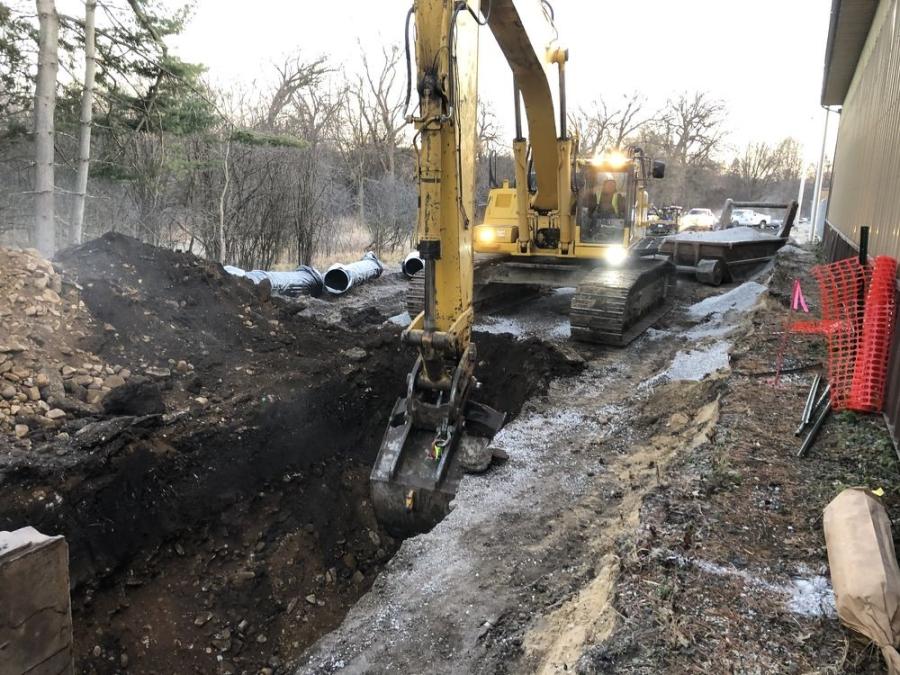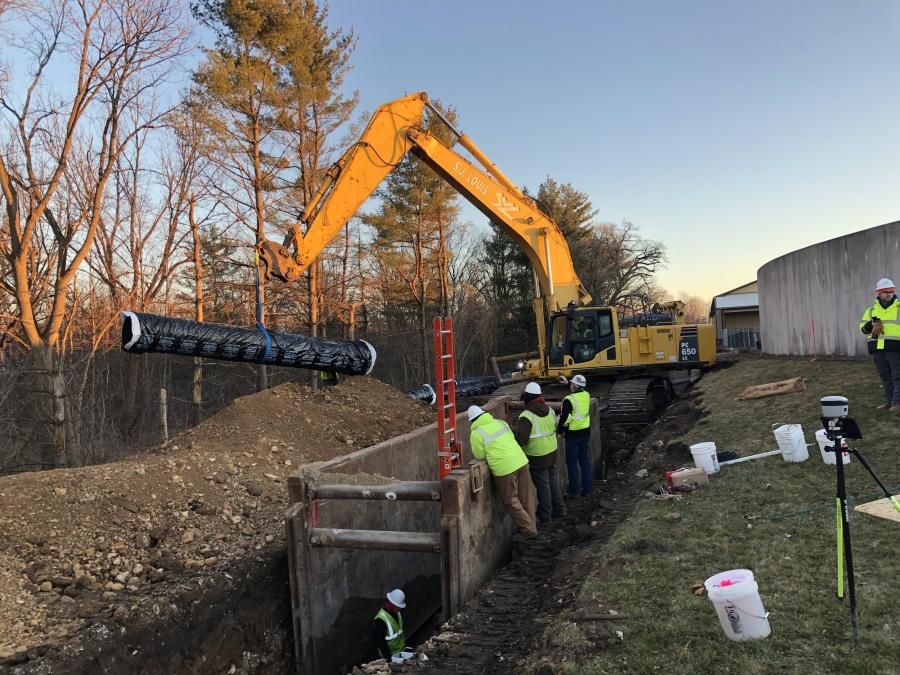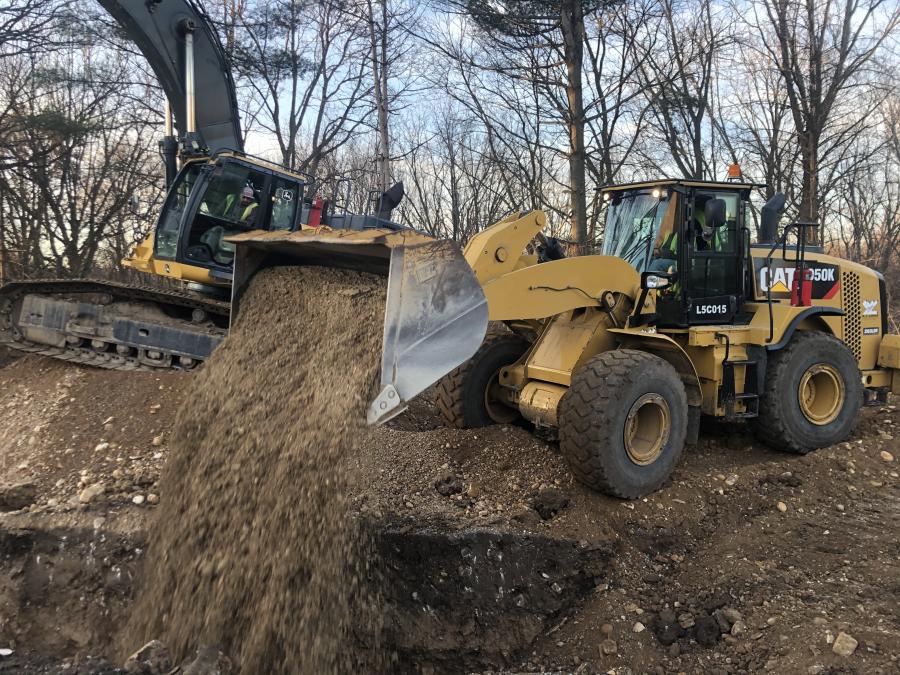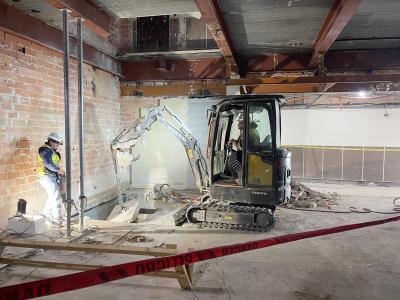The first project to break ground was the phosphorous enhancements at the clean water plant.
(Waukesha Water Utility)
Construction crews in Wisconsin are working on a $286 million project that's designed to provide safe, sustainable and reliable water for years to come. The city of Waukesha is under a court order to be in full compliance with federal drinking water standards for radium by September 2023.
"Waukesha's current primary water source is a confined deep aquifer," said Waukesha Water Utility General Manager Daniel Duchniak. "The aquifer is severely drawn down, due to years of use in southeastern Wisconsin. Recharge of the aquifer is limited by the shale confining layer, making long-term reliance unsustainable. Also, as aquifer levels have declined, the levels of natural contaminants such as radium have increased.
"Waukesha is outside of the Great Lakes basin, but is in a county that straddles the basin divide, meaning the city was eligible to apply to use Great Lakes water if it met a number of strict conditions, including demonstrating that it has no reasonable water supply alternative. The ten Great Lakes states and provinces, after extensive review, unanimously concluded in 2016 that ‘none of the evaluated alternatives were found to be reliable sources for a long-term, dependable and sustainable public water supply and, therefore, the applicant is without a reasonable water supply alternative' to Lake Michigan water."
Waukesha also is required to return the water, after use and treatment, to the Great Lakes basin. In addition to the city of Waukesha, pipeline construction will occur in the Milwaukee, New Berlin, Muskego, Franklin, West Allis, Greenfield and the Village of Waukesha.
According to Duchniak, water will be sold to Waukesha by the Milwaukee Water Works. A 13-mi. 30-in. water supply pipeline will be constructed from a pumping station in Milwaukee to Waukesha. A 23-mi. 30-in. return flow pipeline will be constructed from the Clean Water Plant in Waukesha to an outfall point in Franklin that empties into the Root River, which is tributary to Lake Michigan.
The project also calls for a booster pumping station in Milwaukee. It includes a booster pumping station, two 8.6-million-gal. ground storage reservoirs and a 1-million-gal. elevated storage tank in Waukesha, and a return flow pumping station along with enhanced phosphorus treatment at the clean water plant. The work has been split into a total of six different contract packages of varying values that will be bid out through early 2021.
The first project to break ground was the phosphorous enhancements at the clean water plant. Work on the return flow pipeline began in November 2020, and work on the water supply pipeline started in December 2020.
Waukesha hired an extensive team of engineers and consultants, headed by Greeley and Hansen, to engineer and design the water supply and return flow infrastructure, as well as to work with federal, state and local officials on required permits.
"City residents have understood that a safe and reliable water supply is critical to the community's future and have been strongly supportive of the project," said Duchniak. "The business community, including the Waukesha County Business Alliance, also has been a key ally over the years. The Waukesha Common Council unanimously approved the project, and lawmakers at the federal and state levels have been strongly supportive. Waukesha Mayor Shawn Reilly and Milwaukee Mayor Tom Barrett also negotiated an agreement for Waukesha to purchase water from the Milwaukee water works, setting a historic precedent for regional cooperation."
The three contractors on the project are S.J. Louis Construction Inc.; Super Excavators; and C.D. Smith Construction Inc.
Duchniak described the construction teams as a good fit for the undertaking.
"All these firms have the experience and personnel necessary to perform the work. Without their knowledge and skills, this project would not be possible."
Waukesha Water Utility Technical Services Manager Chris Walter said working through the multiple municipalities' requirements has proven to be the biggest challenge on the project.
"Each municipality has specific requirements for the backfill and restoration of work in their jurisdiction. This requires a lot of coordination with multiple offices of each area.
"The work has begun at the clean water plant in Waukesha. This work includes a new pumping station for the return flow. Additionally, the pipeline work has begun at the same location. This work is expected to progress south on Sentry Drive toward Sunset Drive. Soil erosion protection measures are being installed and potholing of existing utilities has begun. Additional pumping stations, water storage tanks and pipeline work, along with trenchless activities, have yet to begin, along with roadway restoration."
Heavy machinery on site includes a Komatsu excavator PC 650 LC 8; a Komatsu WA 470; Cat excavator 325 zero turn; American Auger 48/54-900 Quick/Split; Cat D5K LGP; and a Cat 950M loader for pipe installation. Main materials include 30/36-in. ductile iron and HDPE.
As for the condition of the site, some areas are open fields and others are roadways in various conditions.
"Since this project is being completed in two different counties, seven different municipalities and also, in part, in state right of ways, there are a lot of varying conditions over the course of the 23 miles for the return flow pipeline and 13 miles for the water supply pipeline," said Walter.
Prep work for construction crews includes clearing and grubbing some areas; roadway removals; potholing existing utilities; installing soil erosion protective measures; and dewatering activities. Building the return flow pipeline from the Waukesha wastewater treatment plan to the Root River calls for 23 mi. of pipeline installed via open cut and trenchless technologies; reaeration structure; and a concrete outfall on the bank of the Root River in Franklin.
Waukesha Water Utility Operations Technical Services Manager Kelly Zylstra added, "There is a new pumping station being built at the end of the treatment train at the existing clean water plant site. The pumping station will allow flow to be directed to the existing outfall and the new return flow pipeline. The phosphorus upgrades include tank and chemical feed modifications."
Said Duchniak, "This is a project that will provide a safe, reliable water supply for the city of Waukesha residents and businesses for many generations. It's the project of a lifetime, and to be entrusted by the leaders of the city to be part of the team that guided them through this process is an honor. We worked with eight neighboring communities to finalize the design and partnered with state and federal entities to fund the project. Having the distinction of being a part of it is very humbling." CEG
Cindy Riley
Birmingham, Ala., native Cindy RIley originally planned on a career in law, but during her sophomore year in college realized journalism was her true calling. A magna cum laude graduate of Samford University, Riley first worked in radio and TV. Named Best News Anchor, Best News Reporter and Best Investigative Reporter by the Associated Press, she interviewed numerous personalities, ranging from Dr. Henry Kissinger and President Bush to Michael Jordan and Captain Kangaroo.
As a print journalist, Riley has covered a variety of topics, including construction, business, health and the arts. In addition to CEG, her work has appeared in special reports for USA Today and the L.A. Times. Other publications have included New South Magazine, Portico, Thicket, Alabama Heritage, B-Metro, Business First and Birmingham Business Journal.
Read more from Cindy Riley here.
Today's top stories






















